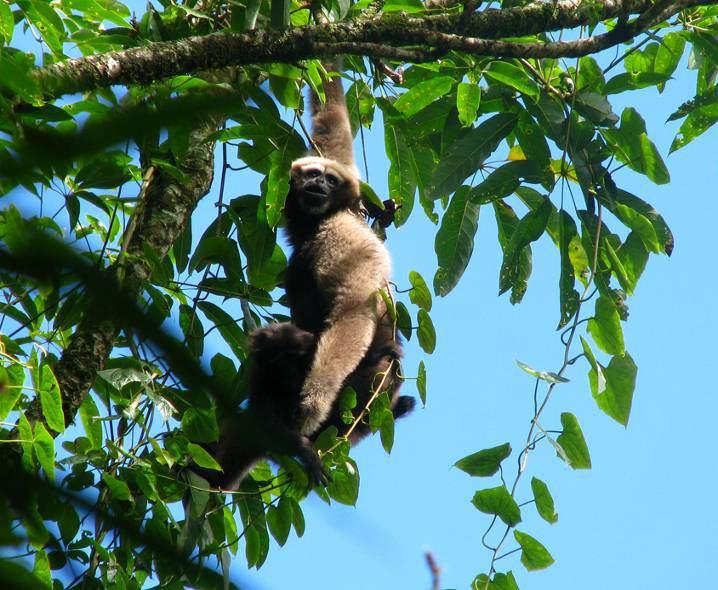Peng-Fei Fan
Other projects
The aim of this project is to study the feeding ecology of Hoolock gibbons in a forest patch cultivated with tsaoko Cardamom in Nankan Park, Gaoligongshan Nature Reserve.

Adult female.
With funding from RSG, I have conducted a survey of the population and distribution of hoolock gibbons in China. The survey result showed a rapid decline in both population and sites. Tsaoko cardamom (Fructus tsaoko) cultivation was thought to be one of the main threats to the gibbon population, currently with less than 200 individuals.
Tsaoko cardamom is a spicy and medicinal herb and provides the main income for the local people. Cardamom plantations occur throughout the gibbons’ habitat, between 1,800 and 2,200 m asl. To plant cardamom, local people cut down trees in the moist valley to reduce the canopy density to 50-70%. They also clear out small trees and lianas. It reduces gibbons’ food tree densities and may increase gibbon’s foraging efforts because of the discontinuous canopy. There is need to study the impact of cardamom plantation on the feeding ecology of gibbons.
Two sites inside Gaoligongshan have been chosen for the comparative research. A group and a solitary adult female already habituated to observers in Nankang, the habitat with cardamom plantation and more human disturbances. Another site is Datang where the forest is well protected. This project will focus on the feeding ecology of gibbons in Nankang. I will apply to another fund for the research in Datang.